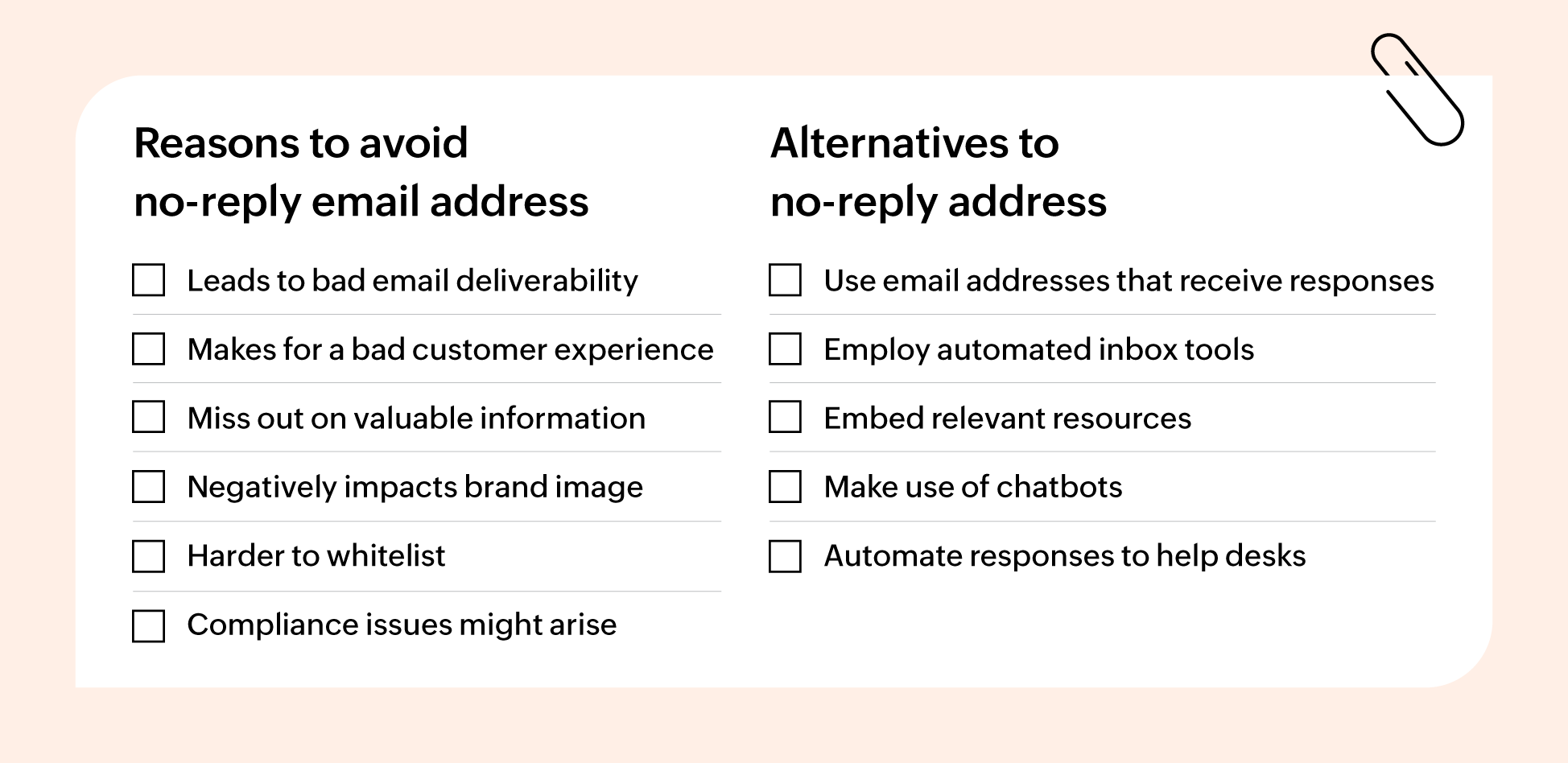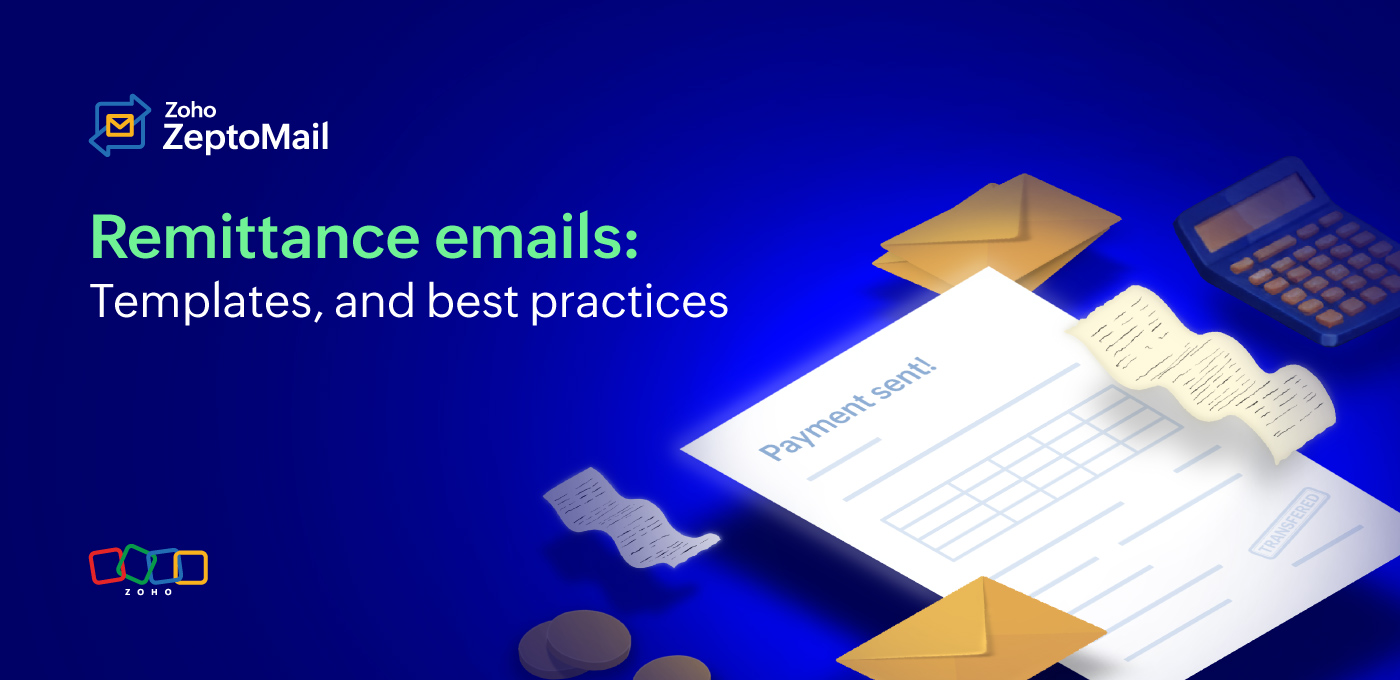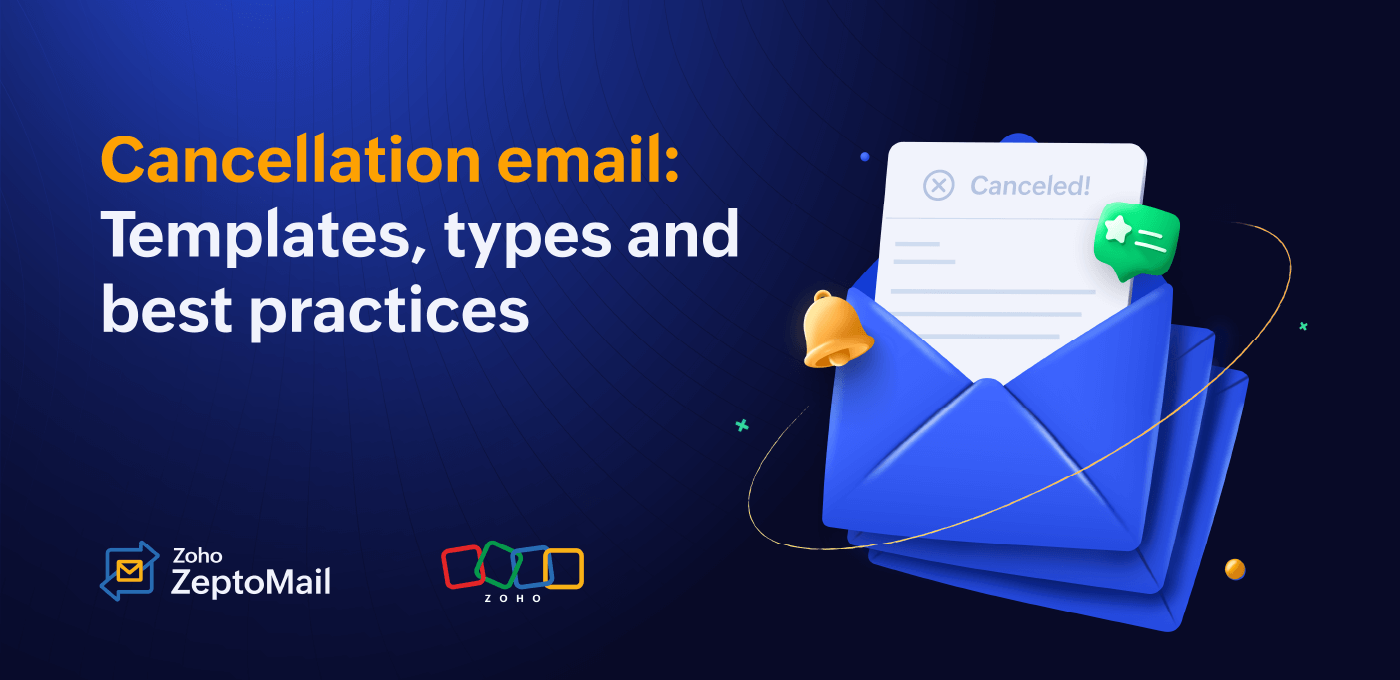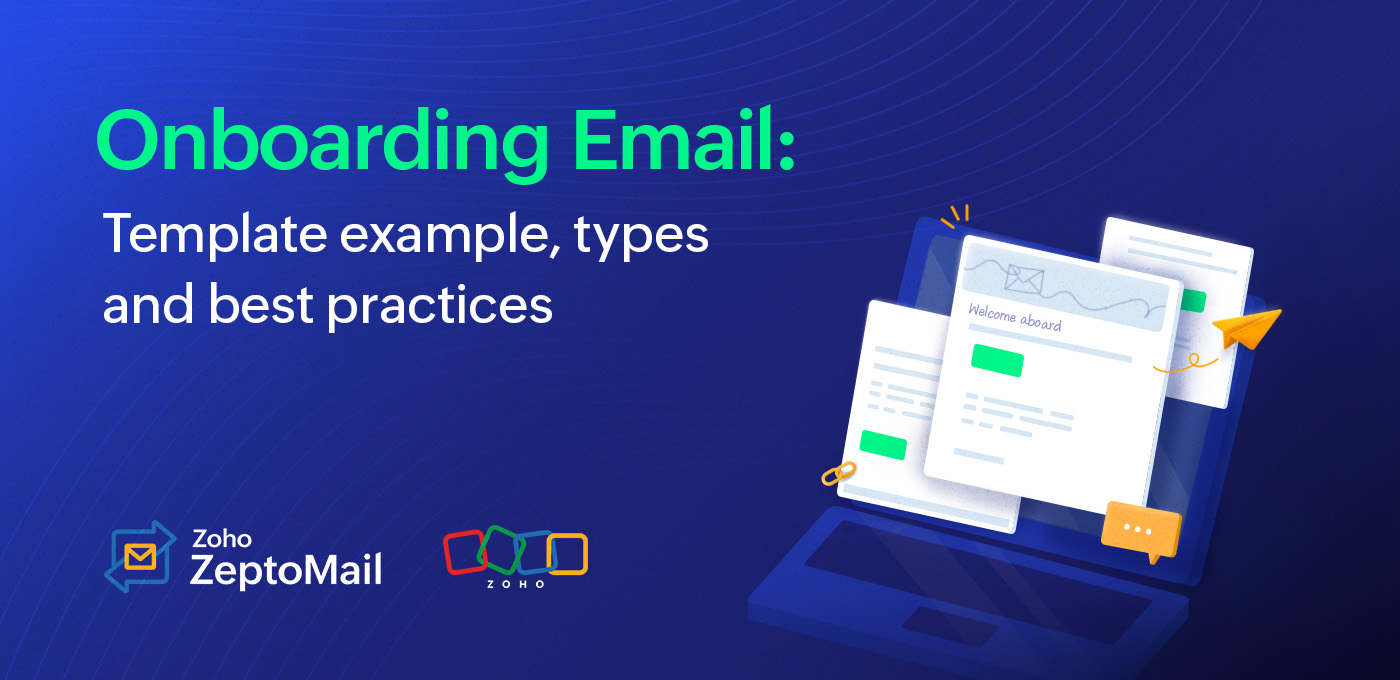- HOME
- More
- Best Practices
- What is a no-reply email address, and why should you stop using it?
What is a no-reply email address, and why should you stop using it?
- Published : March 11, 2024
- Last Updated : October 16, 2024
- 2.2K Views
- 6 Min Read
The “no-reply@domain.com” is one of the most common email addresses that we see in our inbox. Sometimes the display name itself is listed as "NoReply." But have you noticed that the frequency of such sender addresses has been vastly reduced in recent times? No reply email addresses that were once common are no longer advisable to use. In this article, we'll see why.
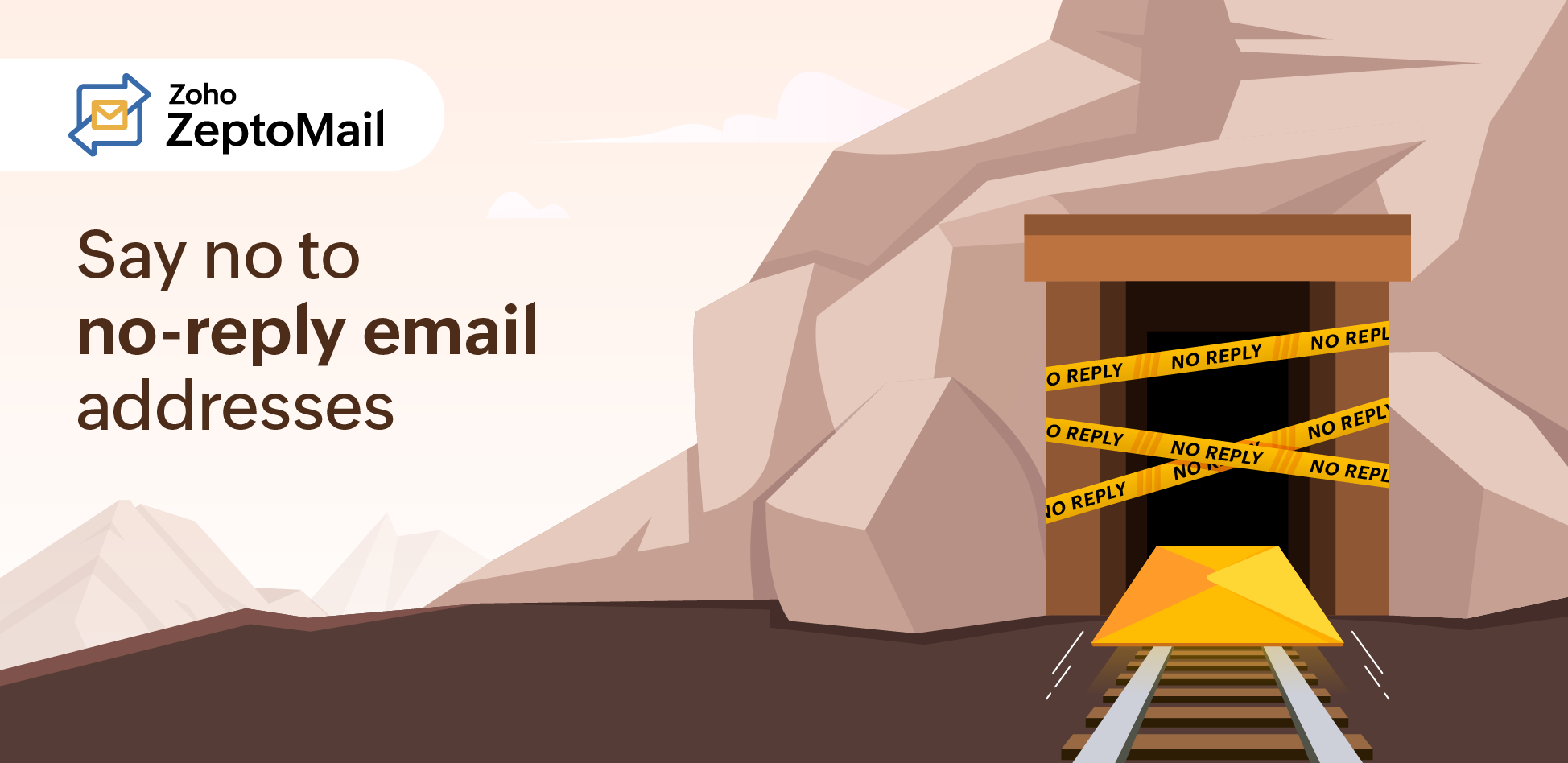
What is a do-not-reply email address?
Do-not-reply email addresses are often easily recognizable from their format. More often than not, the first part of these email addresses is “no-reply,” such as no-reply@zylker.com or noreply@gmail.com, for example.
They’re recognizable, but what do they actually mean? These are email addresses that block replies. You’re asked not to respond to the email address, and the email address is not monitored for responses by the sender.
These email addresses are most commonly used to send emails like receipts, invoices, and transaction updates—emails that don’t need to be replied to. They’re sometimes used for email campaigns. The primary purpose of using these email addresses is to cut down the clutter of receiving a ton of responses.
What happens if you reply to a no-reply email address?
Whether it’s due to a lack of understanding or a genuine mistake, sometimes people do respond to no-reply email addresses. What happens in these cases? These responses never go through to the sender. The emails are blocked, and you will receive a preset reply that says that the replies are not accepted.
In very rare cases, replies to no-reply email addresses could be considered unsolicited and be reported as spam by the receiver's email server.
Why you shouldn’t use no-reply addresses
1. Affect deliverability
Spam filters are becoming increasingly intelligent in spotting spam emails, and it depends on various factors. No-reply email addresses are a red flag to these filters. When sending emails using no-reply email addresses, your emails might be categorized into the spam folder, where your recipient will never see them.
Even if it manages to reach the inbox, with no way to respond to your email or to let you know that they don't want to receive more emails, the only option the recipient has is to mark your email as spam.
Whether it’s the spam filters or the recipient marking the email as spam, by using a no-reply email address, you put your email deliverability at risk.
2. Bad customer experience
Imagine someone knocks on your door to give you a piece of information and then proceeds to shut the door in your face. You can't respond, ask follow-up questions, ask for help, or simply even reach out to them. Would that be a pleasant experience? Definitely not.
A no-reply address is the email equivalent of this. When you reach out to a customer, the customer expects that they’ll be allowed to communicate with you in response. A no-reply email address prohibits this and, in turn, can make for a bad customer experience, and we all know that only happy customers are loyal customers.
3. Misses out on valuable information
A no-reply email address is a one-way flow of communication that cannot be reciprocated. By disrupting two-way communication, you could miss out on valuable information from your customers.
Customer responses can give you valuable insight into their experience and help you improve your business. Customers may also reach out to you for assistance with navigating your business platform. Being responsive to their queries will allow you to guide them in their journey and ensure that you don't lose customers simply because they couldn’t figure out a step.
4. Impact on brand image
We've already established that sending emails using a no-reply email address makes for a bad customer experience. It could also make your business come across as cold or unavailable to your customers. It could make the customers question their importance and your willingness to heed their feedback or complaints.
This feeling could leave a bad taste with your customer and negatively impact your brand image. Always be available for your customers to ensure that they find you trustworthy.
5. Harder to whitelist
Customers tend to whitelist email addresses that they frequently receive valid emails from. This helps deliver the emails to the inbox and helps boost your sender reputation.
Sending emails using no-reply email addresses makes this difficult because not all email service providers allow whitelisting of no-reply addresses.
6. Could be non-compliant
General Data Protection Regulation (GDPR) states that users must be given the option to request information from a business they’re using. When you use a no-reply email address, you’re not allowing the customers to reach out to you with their questions. This could be in violation of GDPR and other international laws. While they don't specifically prohibit no-reply email addresses, it’s best to stay clear of any possibilities of non-compliance.
Alternatives to no-reply email addresses
Clearly, the benefit of discarding no-reply email addresses outweighs the convenience of a clutter-free inbox. So, here are some alternative best practices for getting rid of them.
1. Use email addresses that can receive responses
The first and most obvious alternative is to use a real email address that your customers can respond to. It can come in any form or shape. It can be a generic email address from your company domain (e.g., orders@zylker.com), your employee's work email (e.g., harry.potter@zylker.com) or even a department email address (e.g., support@zylker.com). You can use a transactional email service like Zoho ZeptoMail to add your domain and send emails using that.
Whatever the format of the email address, the primary goal is to send emails using an address that customers can respond to.
2. Employ automated inbox tools
The most common reason why businesses use no-reply email addresses is to cut down on the clutter. Sorting through responses from a large customer base can be time-consuming and overwhelming.
One way to handle the inflow of emails while you switch out of no-reply email addresses is to use automated filters or rules to organize the responses into more easily manageable groups. This ensures that there's no clutter while equipping you to attend to the responses efficiently. You can also use available third-party inbox tools to manage the incoming emails.
3. Embed relevant resources
To reduce responses to just the most essential ones, you can embed useful and relevant resources in the email you send. Including the support email ID, help documentation, or your social media profile will gently nudge the customer to use these avenues to reach out to you instead of responding to the email you send.
4. Build chatbots
Email is a reliable and efficient form of business communication, but when it comes to attending to customer feedback or complaints, it could be the slower mode of communication. To speed up the turnaround time and reduce the number of email responses you receive, you can build chatbots into the platform or on your website.
You can avoid repetitive complaints or feedback using chatbots programmed with the most common queries and relevant solutions.
5. Automate workflows for help desks
When transitioning out of using no-reply email addresses, you’ll start getting responses from your customers. It could be less or more depending on your customer base. As a first step, as you get used to managing this incoming wave, you can automate workflows that forward these emails to customer support software and automatically create tickets.
This will help manage the incoming emails and ensure that you don’t miss out on any email response.
Wrapping up
While no-reply email addresses were once the norm, they’re no longer a wise choice for your business. With more tools available now, you can be more readily available to your customers while still being able to manage the incoming responses efficiently.
Here are the key takeaways from this article:
